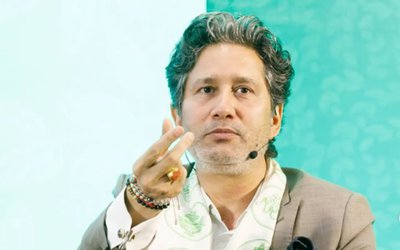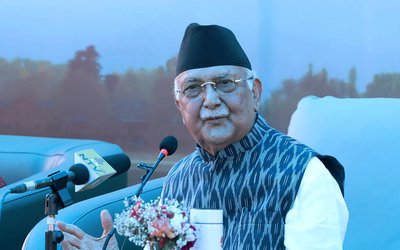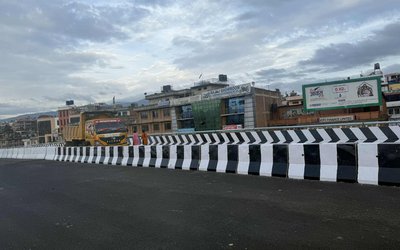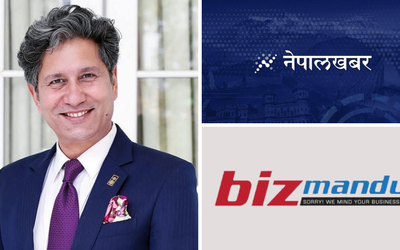More on News






After working years in Agriculture Development Bank, PITAMBER PRASAD ACHARYA with the mission of bringing tangible change in the life of rural poor conceived Development Project Service Center (DEPROSC-Nepal), in September 1993. Nobody would have imagined that DEPROSC-Nepal would emerge as a leading NGOs contributing to uplift the life of thousands of rural population, but Mr. Acharya has the vision for that. After eighteen years, Acharya shows that a small NGOs can bring changes in the socio-economy of rural population in the remote parts of Nepal. Out of 75 districts, DEPROSC has been implementing its projects in 41 districts of mountain, hill and terai region. From supplying food to food deficit region to high yield agriculture and micro-finance to health, education, nutrition, community development. DEPROSC has already established its name. As Nepal is celebrating cooperative day, Acharya spoke to New Spotlight about how DEPROSC has established itself as a change agent. Excerpts:
As an organization supplying food in the food deficit areas of mid-western and far western region, how do you see state the food security situation now?
The region is food deficit in itself. Supply of food from the private sector is not feasible because of two reasons; firstly all the districts do not have easy access of road transport and secondly, people can not afford to buy them even if it is supplied at commercial price. Therefore, state or any other humanitarian organization must do something for this region unless something remarkable is happened. Food supply from Nepal Food Coorporation largely confined due to the lack of timely and adequate transport subsidy from the government and quantity per se is not adequate to fulfill the need of that region. We, with the support of United Nation's World Food Programme (WFP), are supplying food commodities in that region.
What about the supply situation in Midwestern region?
The situation is getting worse in all the districts of far west and mid-west but the situation Under a scheme of World Food Program, we have already distributed 23796 metric tons of commodities including rice, WSB, Pulse, Oil and Salt in 20 districts of various parts of Nepal at different crisis times such as drought, hail storm, price hike, flood and food scarcity in general. Among the commodities, the rice consists of 21,441 metric tons, 907 WSB, 1247 Pulse, 161 oil and 39 metric tons of salt. We covered 1,031,004 population of 182,779 Households. The districts include Dolpa, Humla, Jumla, Kalikot, Rukum, Jajarkot, Pyuthan, Salyan, Dailekh, Surkhett, Siraha, Saptari,Sunsari, Dhanusha, Mahottarai, Banke, Bardia, Ramechap Dolkha and Sindhuli.
What other works DEPROSC has completed?
In addition to the work in food security, DEPROSC Nepal works in varied sectors of development. These include agriculture development, microfinance, natural resource management, , drinking water, irrigation, reproductive health, education, nutrition, sanitation, community infrastructure, disaster preparedness, HIV/AIDS, Anti-trafficking, Haliya and Kamaiya issues and so many other cross cutting issues.
Under the construction rehabilitation infrastructure mobilization of rice, we have completed 2589 schemes in those districts.With completion of 277 irrigation schemes, the command areas of such projects are 2038 hectors. We completed 9 irrigation projects with command areas of 40 hectares in Dolpa,79 projects with 371 hectares in Humla, 26 projects with 73 hectares in Jumla, 75 projects with 660 hectares in Jajarkot. We have also completed number of wooden bridges, rural roads, schools buildings, health posts, and other micro schemes.
On what approach DEPROSC works?
Our approach is people centered. Participation, need based address, gender balance, inclusive and exclusive targeting, transparency, political neutrality are our major working approaches. Idle labour mobilization for constructing productive infrastructures backed by technology dissemination, extension, marketing support maintaining above mentioned approach is the focus in food security sector. It is impossible to uplift the life of people without mainstreaming them in development process.
What is the state of availability of foods?
Various organizations have been helping supplying foods. In spite of that, the food is yet to available to all. We have help distributed thousands of metric tons of rice in the last nine years in food deficit districts. One of the good parts of our work is that our efforts yield a good result. Stakeholders and our partners are well satisfied.
Can food supply in deficit area is a solution?
Along with supplying food, there also need to disseminate the technology and information to show how to increase the production and productivity. For example, we are stressing for the development of irrigation because it is the way to increase the production of food products. Thanks to our efforts, we are able to provide irrigation to 2038 hectares of lands. We are also providing materials to upgrade, build and renovate the irrigation canals. Need to change the food habit going back to the original but of course, in improved mode, is also necessary.
What strategy do you prefer?
I think without dissemination of technologies we cannot increase the production to address food crisis all the time. We share these views with our donor / partners as well including WFP. Delivering the food is just a short term solution but there need to go for long term solution and that is to increase the production of local foods. To guarantee food security we must implement long term projects.
What alternative idea do you propose?
We need to take the food security issue very seriously considering its long term implications. One way is to encourage farmers to grow the high value low volume products. Encouraging farmers to produce Non-Tiber Forest Products (NTFPs) and Medicinal Plants will be a good option. Farmers are making a lot of money in Dolpa by collecting Yarsa Gumba. Similarly, there are many important herbs that can produce.
Have you implemented such projects?
We have already made significant change by introducing high value crops in Dadeldhura district. The farmers of Dadeldhura are now selling their products up to Nepalgunj and Dhangadi. Similarly, we have also launched the programs in Rasuwa, Lamjung, Ramechap, and Nuwakot. These high value crops program helped to uplift the life of rural people.
Where do you work?
During 18 years of our establishment, we have already worked in 47 districts. Although some of our programs were phased out, we are still working in 41 districts. Not only because of WFP, have we been working in remote parts of Nepal to increase the food production. We have been encouraging high value cash crop since the establishment of our organization.
How do you distinguish your organization with others?
Wherever we worked, we always build well developed infrastructures which are workable even after the completion of our projects. Besides, institutional development for sustainability that we focus shows distinction among others. We have developed 145 cooperatives with collections of 800 million rupees in saving in Dadeldhura, Nuwakot, Rasuwa, Sindhupalchowk, Ramechhap, Lamjung. Similarly, Farmers Association (Cooperatives) User's group and their institutionalization in all those districts are more visible.We are proud to say that we also increase their capability and capacity. We have invested a lot of efforts and money to expand the high value cash crop in those districts. Signifianct changes can be observed in Dadeldhura. Farmers are reaping all kinds of benefits now. You cannot see impacts in short term.
How your microfinance programs look?
We are implementing in two modalities. We are working in cooperative modality and we have also direct lending. Now we are planning to establish a national level bank in collaboration with commercial banks. Our bank is going to be purely for the poor. The paid capital of the bank will be 160 million rupees.
Why do you need bank?
We don’t have such a huge amount of money and what we can do is to capitalize their money to poor. Even now DEPROSC involves in microfinance business with 52457 members covering 212 village development committee of 11 districts. We have 30 branches with 142 staffs and 2078 centers. Once the volume of business increases, we must seek for profound regulatory framework that help sustaining the programme and further grow.
What is the state of your microfinance program?
Our microfinance has now attained the operational and financial self-sufficiency. We have disbursed 3.7 billion rupees to the 50000 women without collateral maintaining 99.85 per cent repayment Internal savings generated from rural women is around 200 million Every loan investment has created around one and half work days employment at the household level.
How political instability disturb your program?
Definitely, political instability at the national level affects every nook and corner so no question our programme to be remained unaffected. However, our programmes are people centered so relatively less affected.
What do you suggest to address the food deficit of mid-western region along with supplying subsidies food?
Along with offering subsidize food products in food deficit of mid-west and far-west region; we need to take the comparative advantage of the region. The mid western region has ecological comparative advantage. If we can produce medicinal herbs, fruits or NTFPs, these high value products will help. We need to cash all these.
Do you think there is a potentiality?
The huge potentiality of that region can only be improvement through investment in its value chain.
Have you done something?
In collaboration with Dabur Nepal, ICIMOD and DEPROSC, we had conducted a trial research for the domestication of seven species in that region. The result was supposed to be replicated with the leasehold forestry programme designed to address the livelihoods of the ultra poor of that region.
Why do you move to microfinance?
Microfinance has remained one of the core programmes since the beginning. Microfinance is one of the means to bring poor out of poverty while this sort of long run programme contributes for the sustainability of the organization as well. The resources generated from the microfinance can be combined with donor fund for further development.






